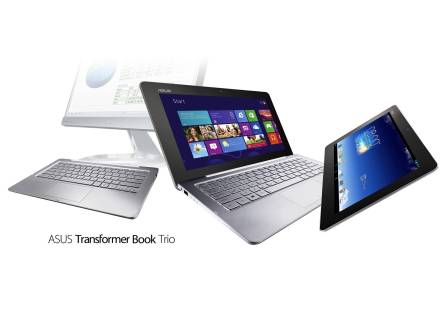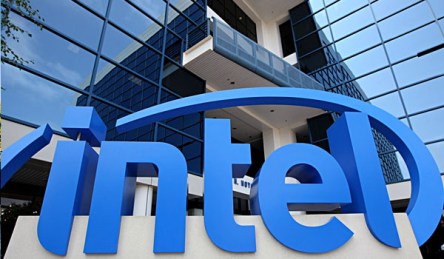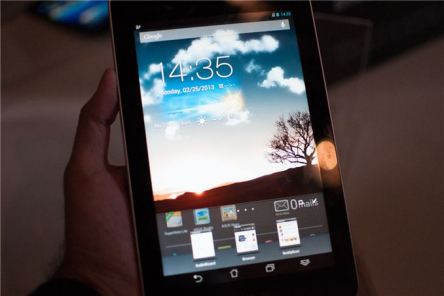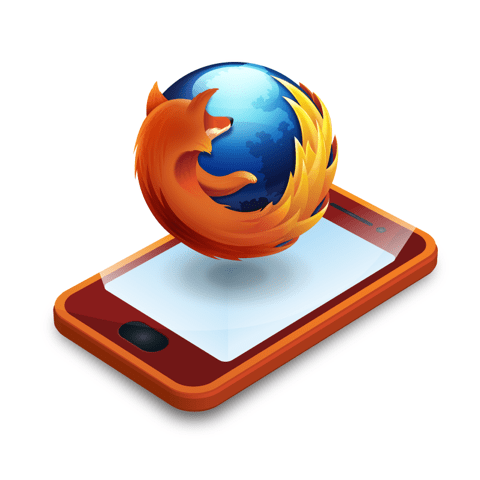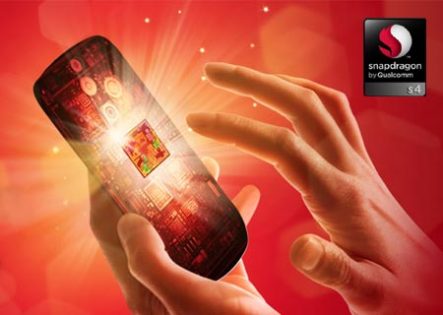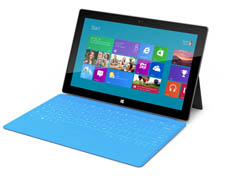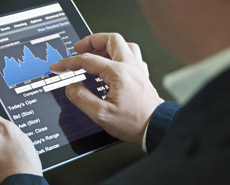Apple’s Oct. 22 product update event in San Francisco introduced a few new devices and detailed information about recent soft-launched products. Some techfiends focused on the iPad models, for others the Mac Pro held the stage. Many Apple fans the announcement of the Mavericks OS X with joy, while a few received it with suspicion. New MacBooks and news about Apps completed the event. CEO Tim Cook presented the numbers: 9 million iPhones sold in the weekend after the launch, the biggest iPhone launch so far. In just five days after the launch, over 200 million devices were running on iOS7 making this the fastest software update in history. On iTunes Radio, 20 million listeners who have accessed over 1 billion songs. The App Store surpassed 1 million apps and the users have downloaded more than 60 billion of them. The iPad with 170 million devices sold, and holds 81 percent of the global tablet user share. Craig Federighi re-introduced the Mavericks OS X; we described it a little while back. The most important features presented at this special event are the improvement in power efficiency (+1 hour of web browsing), as well as the compressed memory feature that will keep the OS running smoothly while being able to compress inactive data. Graphics are upgraded and the integrated graphics support now OpenCL (the magic trick that improves GPU – up to 1.8 X faster than the previous version). Safari, Pages, and the Calendar have been intelligently improved, and now the Maps app is now on the Mac, flaunting a gorgeous fly-over. iBooks also landed on the Mac and Reader became part of the OS X. The most surprising fact about the new version of the operating system is the no price policy – everyone with Snow Leopard, Lion, and Mountain Lion can upgrade for free to Mavericks. Cats were costly, but beaches are free. Phil Schiller introduced the slimmer figure of the 13-inch MacBook Pro, available with and without Retina display. The device is now 0.71-inch thick and weighs 3.46 pounds, not a big drop, but significant if used on-the-go. The latest 2.4 GHz Core i5 Intel Haswell processor has been added under the hood, next to the Intel Iris GPU; 4GB RAM and 128GB SSD are part of the package, at just $1,300. The 15-inch MBP is powered by a 2.0 GHz quad-core i7 Intel Crystalwell with 8GB of RAM, a 256 SSD, and the Intel Pro GPU, at $2,000. All Apple devices are environment-friendly. Among the checklist point are ENERGY STAR 6, EPEAT Gold, BFR free, and PVC-free. It was Phil Schiller who presented perhaps the most amazing device of the October 22nd special event – the cylindrical Mac Pro. This stunning machine runs on Intel Xeon E5 with 4 to 12 cores, topping out at 7 teraflops of computing power, with up to 30 MB L3 cache and up to 12 GB of GDDR5. The device has up to 60GB/s bandwidth and stunning graphics – the Mac Pro’s dual standard workstation GPUs run AMD FirePro graphics which support 4k video output. Connectivity wise, the Mac Pro features 4 USB 3 ports, 6 thunderbolt 2 ports, 2 1GB Ethernet ports, HDMI, and 802.11ac Wi-Fi. “It is a computer that packs an incredible amount of power into one-eighth the volume of the previous model,” Schiller said at the event. It is the quietest Mac Pro (equal to the Mac mini) as it uses 70 percent less energy than the previous version. It can be purchased in December, starting at $2,999. The 475,000 iPad apps deserved a new device so the fifth-generation iPad is here and is really thin. The iPad Air is 20 percent thinner than the previous version at 7.5mm and weighs 1 pound – it is the lightest full-size tablet currently available. The processor has been upgraded to the 64-bit system-on-chip A7, recently launched with the iPhone...
Asus Transformer Trio...
Seeking multi-device solutions
Asus is at it again. Imagination and innovation are once more on display with the newly revealed Transformer Book Trio. A mind-blowing gadget, it’s a slick notebook, a dockable tablet and a veritable desktop PC, all in one. The world’s first three-in-one mobile device is designed to offer extreme flexibility, encompassing work, play, and social interaction. The Asus design shows the desire of technology developers to simplify today’s digital lifestyle and the multi-device headaches that come with it. When traveling for business, we’ve all looked into our bag and probably wondered whether it was really necessary to bring along the laptop, the tablet, the smartphone, and maybe even a standalone camera, on a four-day business trip. In Asus’ case, the streamlining effort started with transforming expectations for an average notebook. The result of the effort is a triple-faced gadget with dual operating systems, running off a pair of processors and double battery power. When the Trio tablet is docked, it becomes a notebook and can switch between Windows 8 and Android Jelly Bean through a physical hotkey, a similar feature found on the Transformer AiO.. This gives the user the ability to access any of the over 700,000 apps in Google Play and over 50,000 apps in Windows Store. The transition between the two modes occurs smoothly allowing users to sync data and even to continue surfing the same webpage they were on before moving from notebook to tablet mode. The hotkey will not work if the tablet is unlatched from the keyboard dock, in that case it will only run the Android OS. A 4th generation Core i7-4500U, a bigger 750GB of hard drive space, and a 33Wh cell battery are placed under its hood. The PC station serves as a charger for...
Intel Haswell
Fast, long-lasting, green + quiet
We’ve blogged before on the shift from PCs and laptops to tablets, a trend that still has momentum at its back. Intel, the world’s leading chip manufacturer for personal computers, has announced the release of a new product that may reasonably swing the balance—or at least level the playing field. Intel’s Haswell chip has been outfitted with several new components that permit faster, more energy efficient operations. As a result, the computers that use the chip can also become faster, greener, and lighter. As a bonus, Haswell machines will also offer improved graphics, less heat generation, and the gift of silence. Haswell at a Glance Microsleeps to save power: “If someone is typing on their PC, we can literally shut everything down when it’s not being used and then immediately bring it back up again in between the keystrokes,” says Navin Shenoy, vice president of the Intel Architecture Group, in an interview with the BBC. “The system is smart enough to know it’s not being used for those nanoseconds. That’s the kind of granular power management at the chip level that we’ve never had before.” This feature promotes longer battery life and less energy drain. Active-use battery life has been reduced by 50%, with inactive battery use improved by 75 percent compared to the previous generation. Quieter and cooler: Certain versions of Haswell contain a CPU core that uses six watts of power, which is low enough to ditch a noisy, cumbersome fan. The unit stays cool with less noise. Notable leap in GPU: The average user will have no need for an additional graphics card, which previously added to the cost and bulk of PCs. Notebooks and two-in-one devices can now compete with tablets on weight and bulk. Increased capability: Haswell’s CPU performance...
Asus Fonepad & Padfone...
Tablet + phone
Is it a tablet, is it a phone? Why not two in one? Asus keeps coming up with very interesting technology and based on their latest release, one could say that they’re having a good time experimenting with the industry’s most popular mobile devices: the smartphone and the tablet. At the Mobile World Congress they revealed the pair Fonepad and Padfone Infinity. The first one is a 7-inch Android tablet with a 1280×800 display. It runs on Android 4.1.2 OS with 16GB of storage and 1GB RAM. A microSD slot for expanded file storage is available. What makes this tablet interesting is the micro SIM for voice calls. Although highly commented upon, with clear emphasis on its futility (who would want to hold a “phone” that has the microphone too far from the earpiece because of its size that resembles a book?), it’s still a nice experiment result. Still, headsets were created with a purpose, weren’t they? The 3MP rear camera is available only for Asian models; those built for Europe don’t have it. The US market most likely won’t make room for it and that’s because it lacks LTE; Asus has only 3G support. Another interesting aspect of the Fonepad is that it’s got Intel inside, more precisely PowerVR SGX 540 GPU paired with a single-core 1.2 GHz Atom. This is quite the involution as far as the strength of the device is concerned (compared to the quad-core Nvidia Tegra 3 processor that’s in the Nexus 7), games or more elaborate applications will have it slow down fast. As availability, Asia will welcome it in March at around $249 and Europe in April at 219 Euros. The Padfone is not a new product line for Asus, but the updates made to the hardware...
Coming Attractions
Consumer tech in 2013
We’re already well into the new year, but it’s not too late – or early – to anticipate some of the consumer tech releases that will be highly anticipated this year. Last month we learned that the Blackberry 10 won’t be available to U.S. consumers until sometime next month. Here are a few other products that techies are keeping an eye on in 2013. Mobile Operating System from Firefox Apple has one, Google does too; it’s about time Mozilla Firefox joined the Mobile Operating System group. Because entering such a compact market is not easy, the Firefox OS claims it will be cheaper than Android, that it will support rich content with HTML5, and tap into the hardware differently. Another piece of information that leaked is the OS’s ability to control the phone’s camera for slow motion recording or quick, successive shots. Surface Pro tablet from Microsoft Available since Feb. 9, Surface Pro runs on Intel I5 dual-core processor featuring the full Windows 8 Pro operating system. Microsoft has high hopes from it as it is the first device to bring a full operating system to the tablet format without compromising quality. Opinions on it are diverse, although its “snappier and more ‘performant’” (Mary Jo Foley for the ZDNet tech blog), its reliance on the power cable doesn’t help it in the run for the best tablet while its immutability puts it below any laptop. Price-wise it is not a friendly device: the Surface Pro starts at $899 ($200 more than a comparable iPad) and you’ll need to invest another $120 for the keyboard. This two-ways compromised device, as a tablet and as a laptop, makes me wonder, wouldn’t it be more comfortable to get the 64GB MacBook Air laptop at $999? Amazon Kindle...
Snapdragon S4 Pro
Qualcomm's quad core tablet
Qualcomm’s Snapdragon S4 Pro quad core tablet is close to consumer release, a moment much awaited by developers interested in making apps and games for the S4 Pro platform. Early reviewers report that they are impressed by the speed, performance and graphic capabilities of the SoC tablet and anticipate it breaking to the front of the Android pack. Here’s a look at the features: SoC stands for System-on-Chip devices that hold the electronics for a complete, working product on a single chip. Imagine the microprocessor, the digital signal processor (DSP), RAM and ROM, and graphics processor, all on a small chip with an ancillary reduction in power. The result is tremendous speed and mobility. In August of last year, Qualcomm was introducing the Snapdragon classification of its chips and mobile solutions, ranked after the processor’s power in S1, S2, S3, and S4 classes. To simplify things, the company presented afterwards four secondary versions for the superior class S4: Prime, Pro, Plus, and Play. The top version S4 Prime is meant for smart TVs and home theater systems, but the following version, S4 Pro, is the one that made it to the tablets and ultraportable ARM, a bit more appealing to the public. It is loaded with goodies and gadgets, including: 4 Asynchronous Quad CPU cores running at up to 1.5GHz; Adreno 320 GPU; 10.1 inch display running a 1366 x 768 resolution; 13 Megapixel Camera with Flash; 1080p HD video and playback; 7 microphones; 2GB of RAM and 32GB of inbuilt storage running on Android 4.0.4 Ice Cream Sandwich; Android 4.0 ICS; 5200 mAh battery; Charging dock with two USB 2.0 ports, port for HDMI and Ethernet. The APQ8064 CPU, named Asynchronous Symmetric Multiprocessing or SMP, has the ability to be clocked at different...
Surface Tablet
Competition for the iPad
Earlier this month, Microsoft pulled an Apple move and debuted its new Surface tablet to a hushed crowd of tech media bigwigs. It had all the hallmarks of a classic Steve Jobs production: a rented out art studio space, regal staging, and fanfare designed to shock & ahhh. This aggressive cribbing from the productions that launched the iPad was intentional: Microsoft designed the Surface to compete head-on with Apple and become the market’s first iPad killer. They just might be onto something. And they also may have launched the product that will prompt consumers to decide between a tablet-style device, like a Surface or an iPad, or an ultra lightweight laptop, like an Ultrabook. Price points for Surface are expected to be slightly higher than for the iPad, meaning that it won’t be competing in the same space as Google’s low-cost Nexus Tablet, which is now available for $199, but with the more expensive, high performance Ultrabooks. Surveying the Surface It’s the not-so-little things that stand out so far and make the Surface RT (basic model) and Surface Windows 8 Pro (all-in) look like they might make good on those David vs. Goliath aspirations: It’s got a keyboard. When the Surface keyboard was revealed, you could practically hear a chorus of angels sing and wild cheering from the balconies and the sound of a million hearts shouting forth the virtues of love, peace, and happiness. ‘Cause that’s how stoked people are to have a tablet with a real keyboard. The Touch Cover model gives solid keyboard performance, the Type Cover replicates true keyboard feel. Either way, Surface provides consumers the platform to do a lot more than just send off tweets and emails. It’s bigger. Size matters, and at 10.6 inches the Surface display...
Laptop, tablet or ultrabook?...
Business computing options
The campaign towards the perfect device is well underway. Businesses are beginning to accept that they are, perhaps, well beyond the age of the PC. The question now is whether dusk has set on the age of laptops as well. Is the reign of tablets upon us? When it comes to business travel, tablets are the lighter, more space savvy alternative to hauling around a heavy laptop. Beyond lightweight and sleek design, tablets are favored by businesses for their numerous easy-to-use features and shortcuts that access to large quantities of data. Highly customizable apps are growing in popularity with businesses as well. Tablets, however, are currently too limited to serve most businesses adequately. There are two major components that are holding them back: memory and battery life. A Hole in the Armor For a while now, the argument has been that tablets cannot replace laptops for businesses and on-the-go business travelers simply because they do not hold enough memory. For those who need to run programs with ample data, the storage available on tablets remains woefully insufficient. Cloud computing decreases the need for tactile storage space but many consumers have yet to fully embrace the cloud’s potential, both for personal and business applications. The issue of short battery life may soon become moot. Tablet manufacturers are toying with different battery types, overcoming common hurdles such as weight and heat transfer to keep the units compact, powerful, and efficient. At the current moment, there is no tablet that can match a laptop’s performance in a compact package, but that will soon change. The Formidable Foe Though tablet sales are soaring among business and personal consumers, it is unlikely that laptops will be replaced within the next five years. NPD DisplaySearch predicts that by 2017, tablet...


